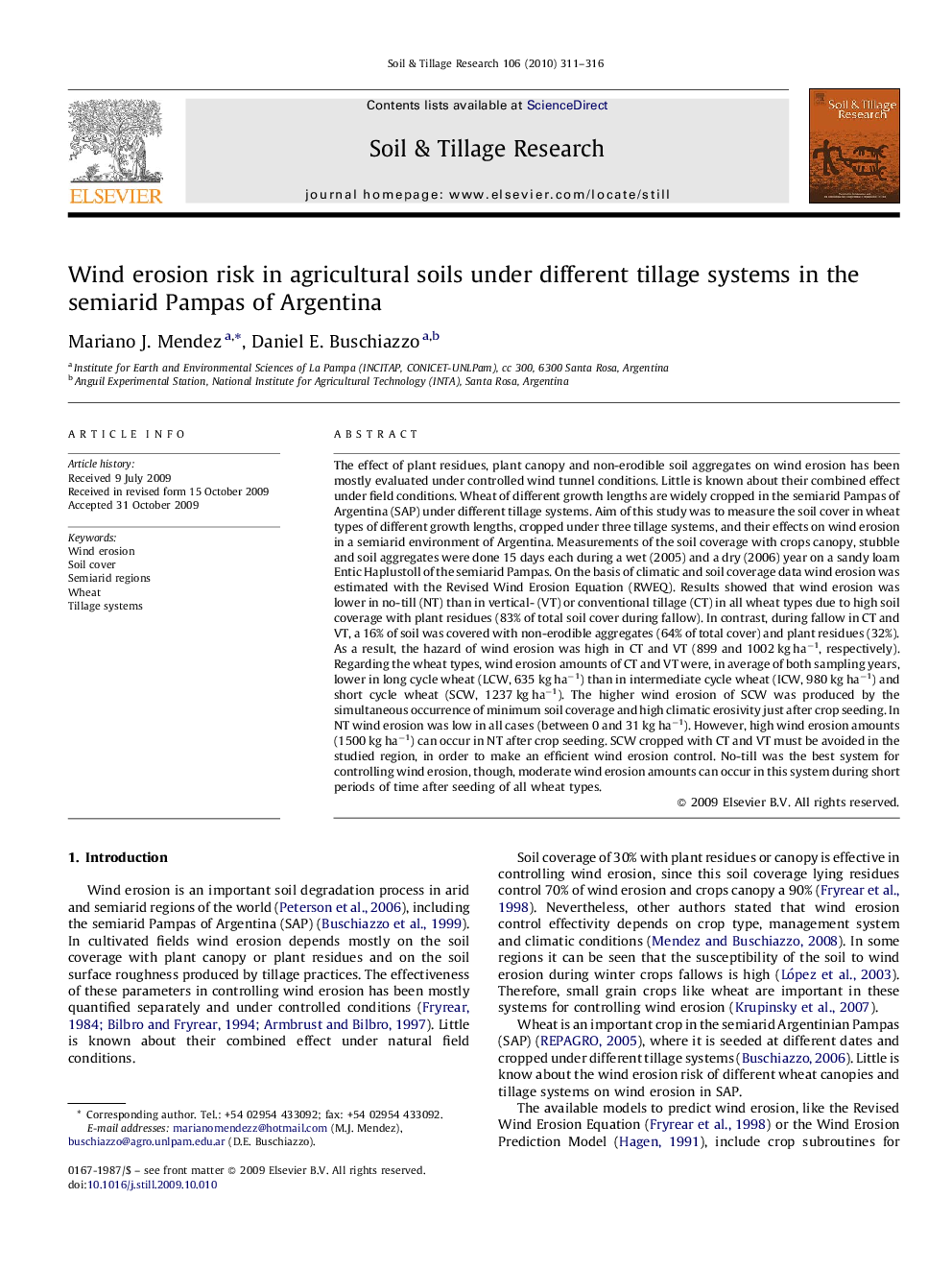| Article ID | Journal | Published Year | Pages | File Type |
|---|---|---|---|---|
| 306298 | Soil and Tillage Research | 2010 | 6 Pages |
The effect of plant residues, plant canopy and non-erodible soil aggregates on wind erosion has been mostly evaluated under controlled wind tunnel conditions. Little is known about their combined effect under field conditions. Wheat of different growth lengths are widely cropped in the semiarid Pampas of Argentina (SAP) under different tillage systems. Aim of this study was to measure the soil cover in wheat types of different growth lengths, cropped under three tillage systems, and their effects on wind erosion in a semiarid environment of Argentina. Measurements of the soil coverage with crops canopy, stubble and soil aggregates were done 15 days each during a wet (2005) and a dry (2006) year on a sandy loam Entic Haplustoll of the semiarid Pampas. On the basis of climatic and soil coverage data wind erosion was estimated with the Revised Wind Erosion Equation (RWEQ). Results showed that wind erosion was lower in no-till (NT) than in vertical- (VT) or conventional tillage (CT) in all wheat types due to high soil coverage with plant residues (83% of total soil cover during fallow). In contrast, during fallow in CT and VT, a 16% of soil was covered with non-erodible aggregates (64% of total cover) and plant residues (32%). As a result, the hazard of wind erosion was high in CT and VT (899 and 1002 kg ha−1, respectively). Regarding the wheat types, wind erosion amounts of CT and VT were, in average of both sampling years, lower in long cycle wheat (LCW, 635 kg ha−1) than in intermediate cycle wheat (ICW, 980 kg ha−1) and short cycle wheat (SCW, 1237 kg ha−1). The higher wind erosion of SCW was produced by the simultaneous occurrence of minimum soil coverage and high climatic erosivity just after crop seeding. In NT wind erosion was low in all cases (between 0 and 31 kg ha−1). However, high wind erosion amounts (1500 kg ha−1) can occur in NT after crop seeding. SCW cropped with CT and VT must be avoided in the studied region, in order to make an efficient wind erosion control. No-till was the best system for controlling wind erosion, though, moderate wind erosion amounts can occur in this system during short periods of time after seeding of all wheat types.
